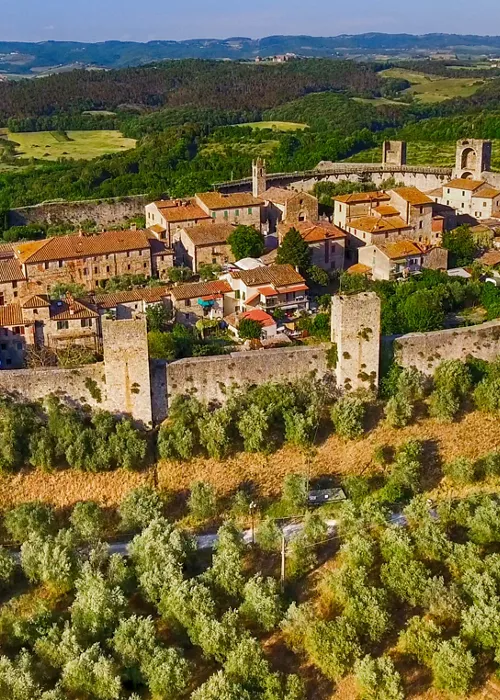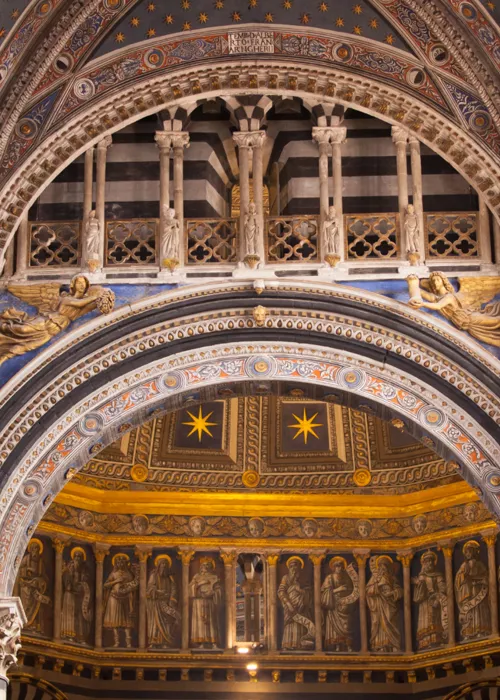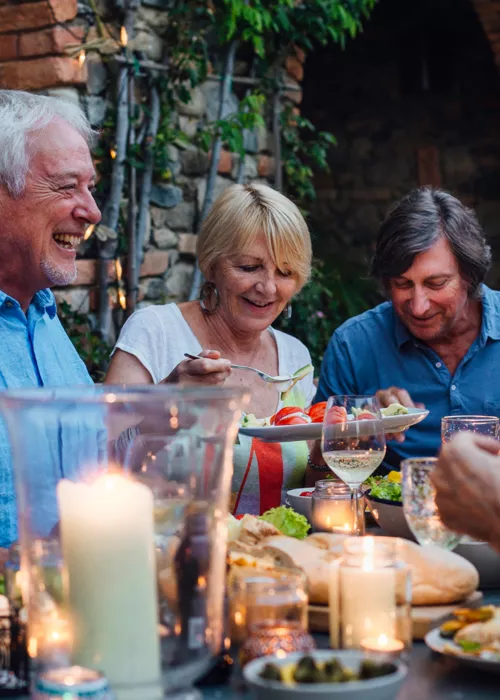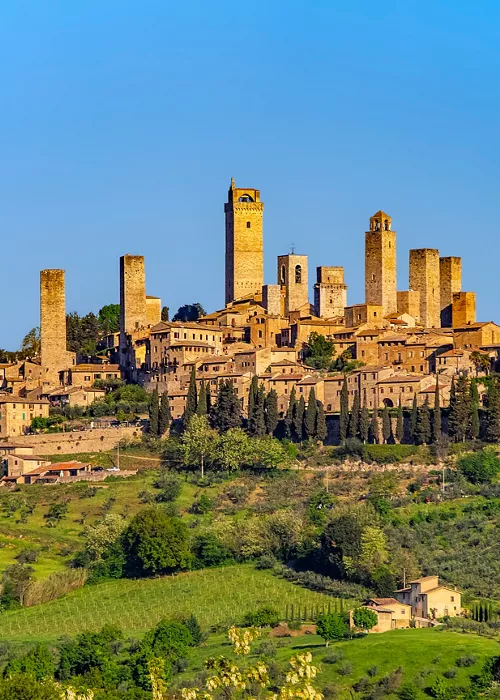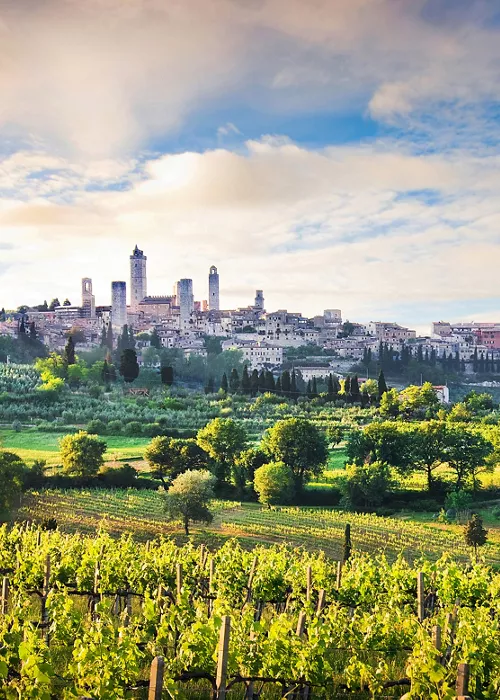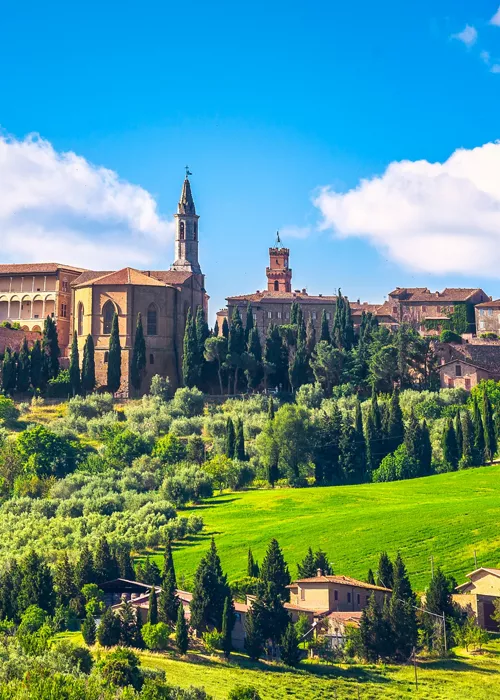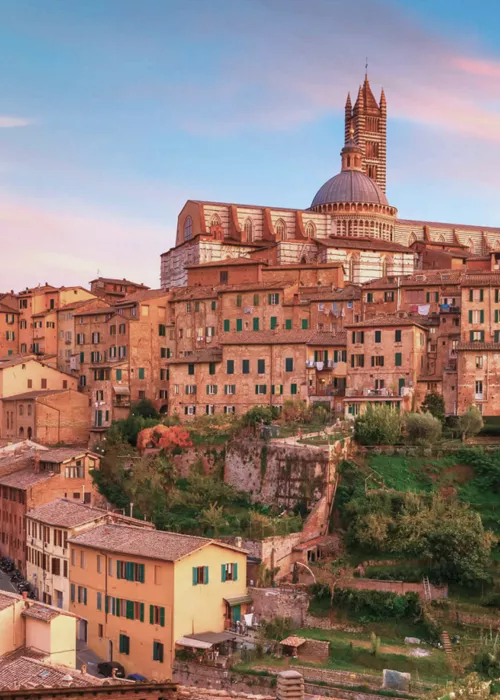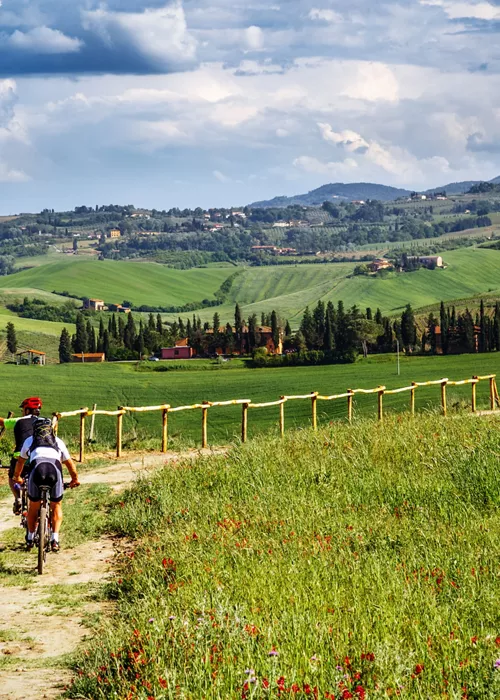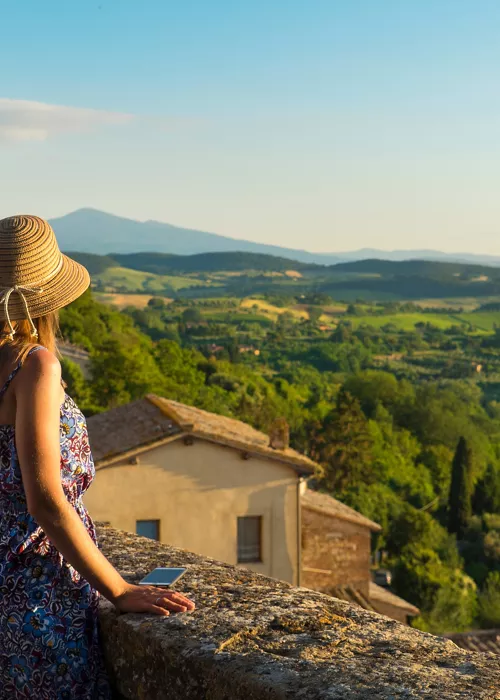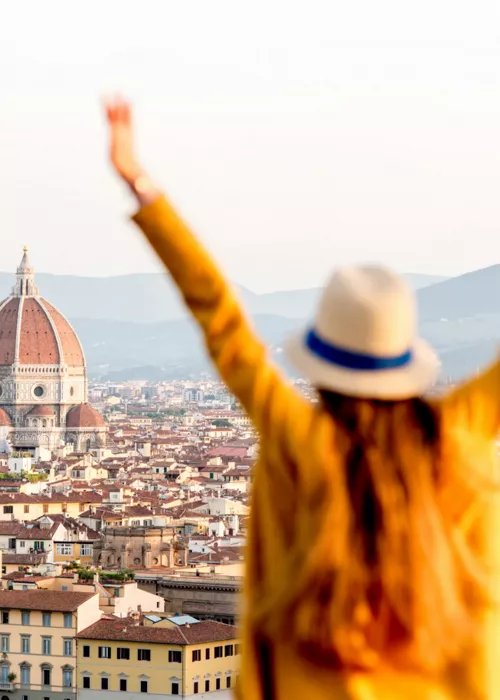A weekend in Val d'Orcia: 10 unmissable churches and monasteries
3 minutes
The spirituality, already inherent in the scenery, is increased by the numerous religious complexes that stud the horizon: abbeys, cathedrals, churches and monasteries that are beautiful to visit because they are enveloped in an atmosphere of intimate tranquillity and are the custodians of an unparalleled artistic heritage.
Ancient villages spring up on the hilltops, with fortresses keeping watch over the valley furrowed by the Orcia river. This is a magical stretch of southern Tuscany lying between the provinces of Siena and Grosseto, which UNESCO has listed as a World Heritage Site.
Montalcino
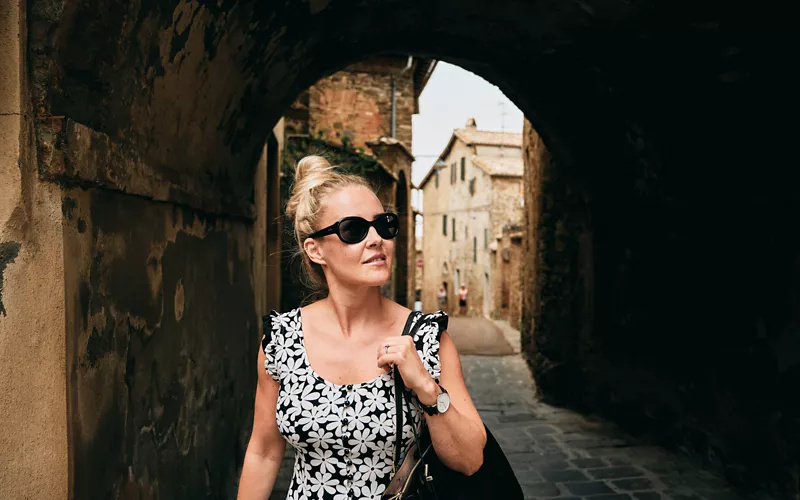
Enclosed in walls and protected by a castle, the village has remained intact since the 16th century and is remarkable for its architectural perfection as well as its scenic location. The Duomo, the Cathedral of the Santissimo Salvatore, erected in 1462 where the Romanesque parish church of the same name previously stood, stands prominently in the historic centre with its Neoclassical façade.
Not to be missed: the paintings inside; the one on the first altar, the Immaculate Conception with Jesus and God the Father, and the two in the Suffrage Chapel.
Castelnuovo dell’Abate
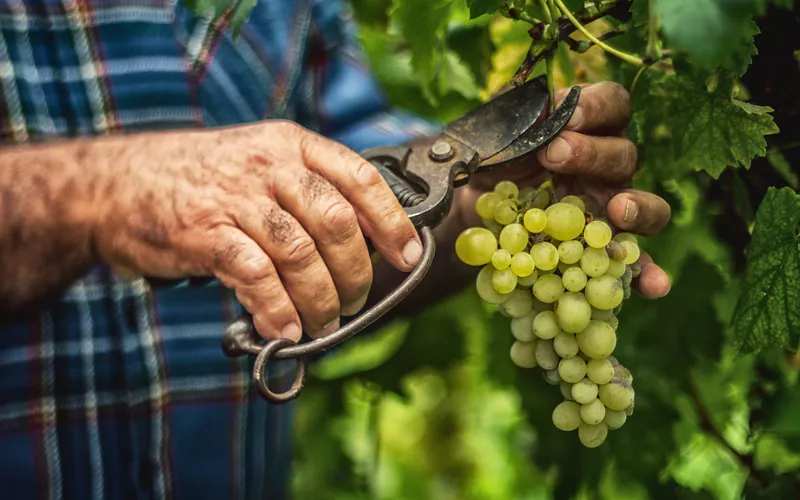
From Montalcino, take a winding and picturesque country road, where the Brunello vineyards, producing the famous wine, accompany you to the village of Castelnuovo dell'Abate. Here stands the 12th century Abbey of Sant'Antimo, a shining example of Romanesque style. This masterpiece of mediaeval architecture stands isolated on a clearing encircled by olive groves and wheat fields. It is a fascinating and powerful place, preserving the charm of the monastic life of the Benedictines, the order that inhabited the Abbey for centuries. Here, the harmony of lines, nature and sacredness come together in perfect unison.
Not to be missed: a stay in the Foresterie, for a few days of spiritual retreat.
San Quirico d’Orcia
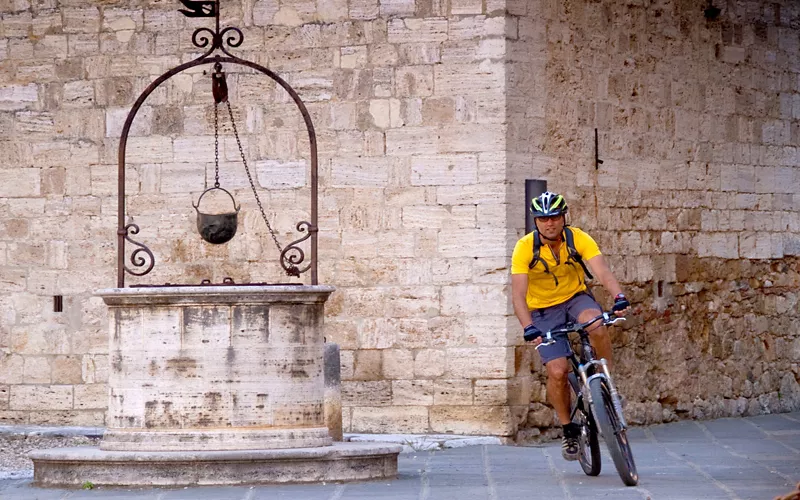
The village set on a hill, from which you can enjoy a thrilling panorama, is dominated by the Collegiate Church of San Quirico and Giulitta: a Romanesque church in which Gothic and Baroque elements have been overlaid. Inside, take a look at the 15th-century altarpiece depicting the Madonna and Child, and the wooden choir.
Not to be missed: outside, on both sides of the portal, you can admire the detail of the columns resting on statues of lionesses.
Rocca d’Orcia
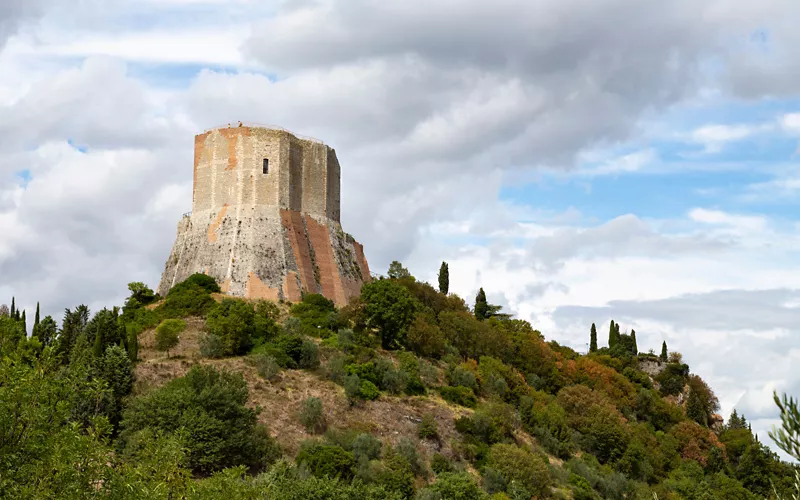
With its austere fortress on a high hill, the mediaeval village has been the guardian of the Via Francigena for centuries. Enjoy the backdrop of neat rows of cypress trees, thousand-year-old oaks, olive groves and vineyards, and gullies, before visiting the small Church of San Simeone. It is Romanesque in style, but probably much older, and is secluded and shrouded in silence, for a meditative pause in the midst of beauty.
Not to be missed: the 14th-century frescoes inside.
Castiglione d’Orcia
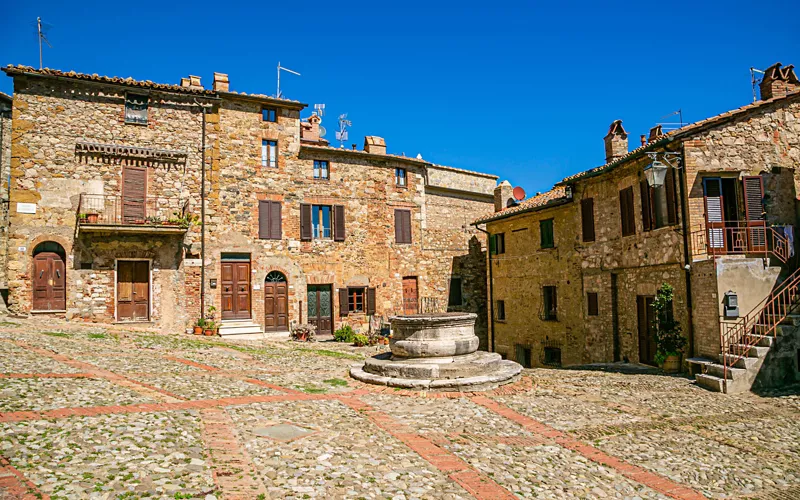
Here, too, the mediaeval village unfolds from the fortress on top of a ridge. Stroll through the narrow streets and admire the cluster of stone houses until you come to the 14th-century Church of Santi Stefano e Degna, immersed in the green rolling hills and with its beautiful Renaissance-style façade.
Not to be missed: the frescoes of the Sienese school inside.
Radicòfani
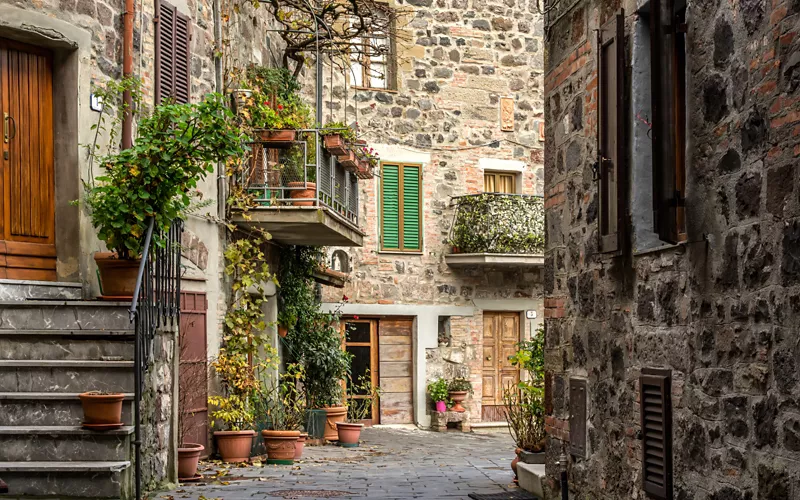
Be guided by the fortress to reach this hamlet, whose main attractions include the Romanesque Church of San Pietro; linger on the square behind the building to observe the view, which opens up luxuriantly towards the south. Before leaving the village, step inside the Church of Sant'Agata, patron saint of the village.
Not to be missed: the Della Robbia terracotta artefacts inside both churches.
Pienza
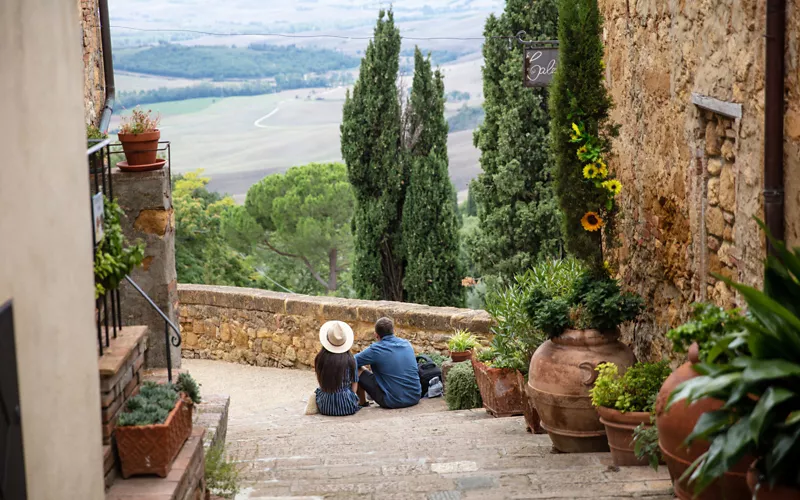
A UNESCO World Heritage site, this town was commissioned by Pope Pius II as an ideal place founded on the values of harmony and formal Renaissance composure. The pre-existing ancient village was redeveloped by Bernardo di Matteo Gambardelli, known as il Rossellino, a pupil of the famous architect and scientist Leon Battista Alberti. Today, the jewel is still resplendent, with its 15th-century Cathedral dedicated to Our Lady of the Assumption.
Not to be missed: the precious works of art commissioned by Pope Pius II from the leading Sienese artists of the period.
Sant’Anna in Camprena
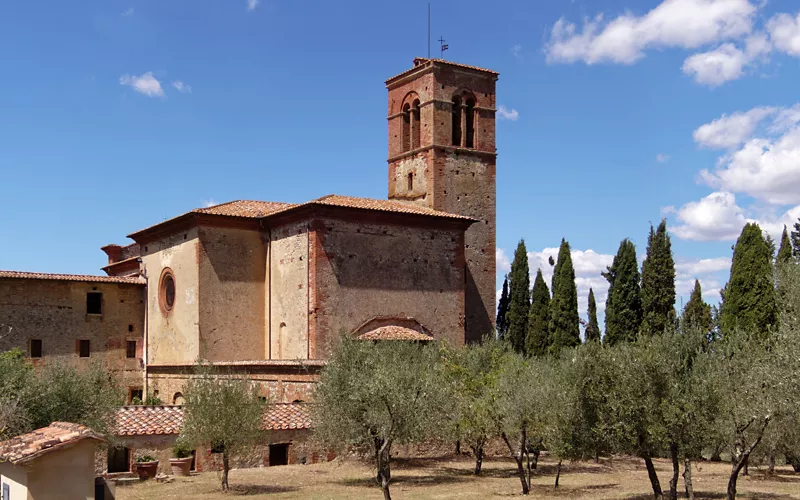
Not far from Pienza is the monumental complex of Sant'Anna in Camprena, formerly an Olivetan Benedictine Monastery, and now partly converted into a farmhouse after a respectful restoration that has preserved the numerous works of art.
Not to be missed: a night here, admiring the frescoes in the refectory in an atmosphere of absolute peace.
Monticchiello
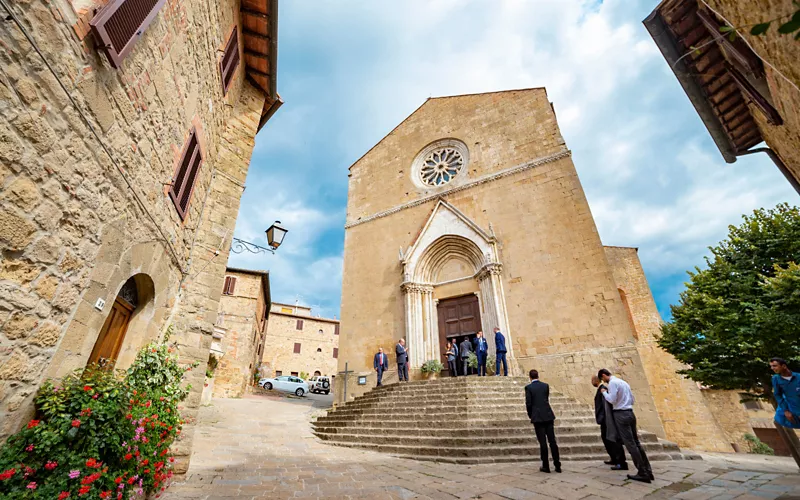
Travelling to this village along a secondary road, you can stop to admire Pienza from afar, appreciating its harmonious urban layout. Then reach the hillock to which the village clings, and head for the 13th-century Church of Saints Leonard and Christopher, with its Gothic façade.
Not to be missed: the 14th-century frescoes covering the entire perimeter walls of the Presbytery, an expression of Sienese art.

